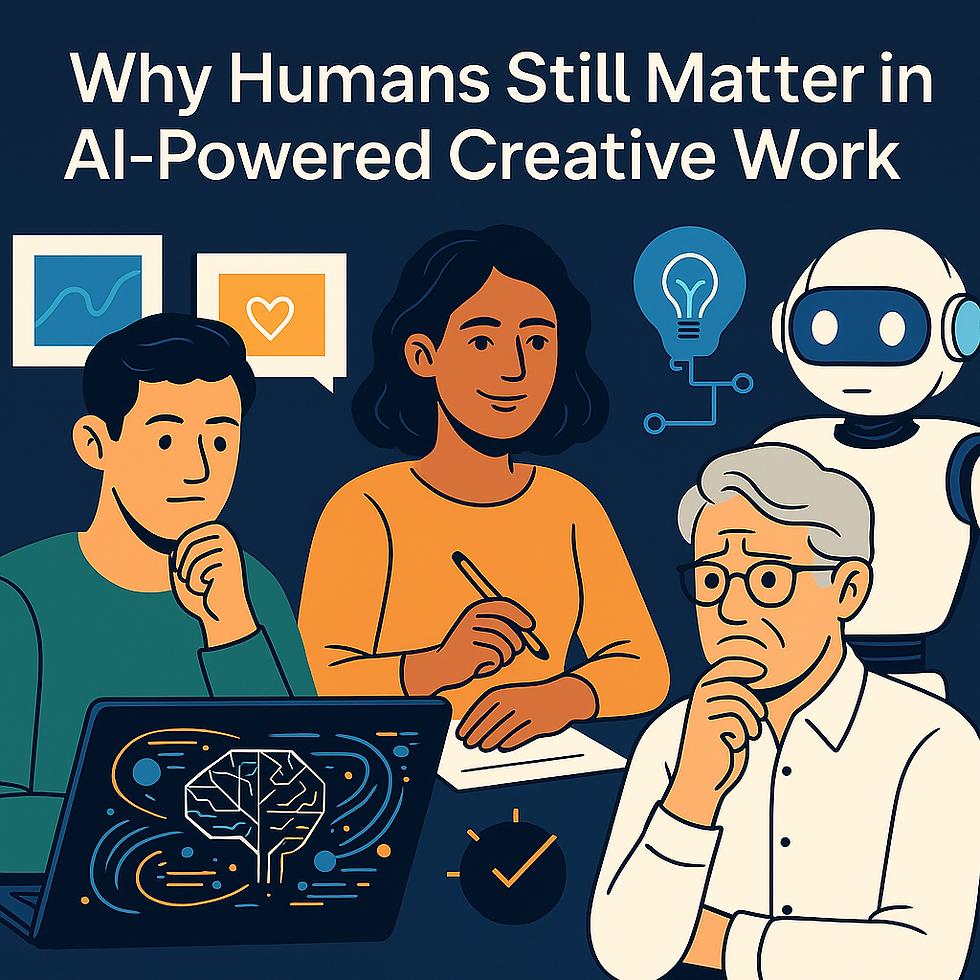Why Companies Should Invest in Video Production for Training Modules: The Power of Storytelling
- pragyasax
- Nov 25, 2024
- 3 min read

In the ever-evolving corporate landscape, employee training has become a cornerstone for success. Yet, traditional training methods—static slides, lengthy documents, or even in-person lectures—often fail to engage employees on a deeper level. This is where video production, powered by storytelling, comes in. Companies that invest in high-quality, narrative-driven training videos can create compelling experiences that not only inform but also resonate with their employees, leading to better retention and application of knowledge.
The Power of Stories in Training
Stories have been a primary mode of human communication for centuries. Neuroscience shows that storytelling activates multiple areas of the brain, making the content more memorable and impactful. When applied to employee training, stories help employees connect emotionally to the subject matter, enabling them to better understand the importance of their roles and actions.
Take cybersecurity risks, for example. Simply outlining the technical steps of phishing detection or password protection often leads to disengagement. However, telling a story about how a single phishing email led to a major company data breach instantly personalizes the threat. Employees can visualize the stakes and feel the urgency to act responsibly.
Imagery and Emotional Impact
Video is unmatched in its ability to combine powerful visuals, sound, and narrative. This multisensory approach creates a holistic learning experience, keeping employees engaged and motivated. Imagine the difference between reading about the risks of improper equipment use versus watching a video that reenacts the consequences of a real-life equipment failure.
For instance:
Deployment Risks: A video could illustrate the real-world implications of a missed protocol during product deployment. By showing the resulting downtime or customer dissatisfaction in an emotionally engaging way, employees gain a tangible sense of responsibility.
Workplace Safety: A story of an overlooked safety measure that caused injury can evoke empathy and emphasize vigilance without being seeming unnecessarily by-the-book.
These examples highlight the value of well-crafted visuals and storytelling in conveying critical information effectively.
The Business Case for Video Training
Investing in video production for training modules is more than just a trend; it’s a strategic decision with measurable benefits:
Enhanced Retention: Research shows that employees retain 65% of information presented visually three days later, compared to just 10% for text-based content.
Cost-Effective in the Long Run: While the upfront cost of video production may seem high, companies save on repeated in-person training sessions, travel expenses, and time.
Scalability and Consistency: Videos ensure that every employee, regardless of location, receives the same quality training. This is particularly crucial for global organizations.
Emotional Buy-In: By incorporating relatable stories, employees become emotionally invested, driving behavioral changes that mere instructions cannot achieve.
How Kaizen Can Help
At Kaizen, we specialize in creating research-driven, impactful training videos tailored to your organization's unique needs. From cybersecurity to deployment risks, we craft narratives that transform dry, technical content into emotionally engaging stories. Our expertise in video production ensures that your training modules leave a lasting impression on your workforce.
Let us help your employees not just understand what's at stake but truly care about the outcomes. With Kaizen, your training will inspire, educate, and empower.
Closing Thought
In a world where employee understanding and engagement can make or break business success, storytelling through video is no longer a luxury—it’s a necessity. Whether you’re addressing cybersecurity risks, workplace safety, or procedural compliance, stories embedded in well-produced videos help employees grasp the "why" behind the "what."
Invest in the power of video. Invest in your people. Let stories drive the change you want to see.



Comments